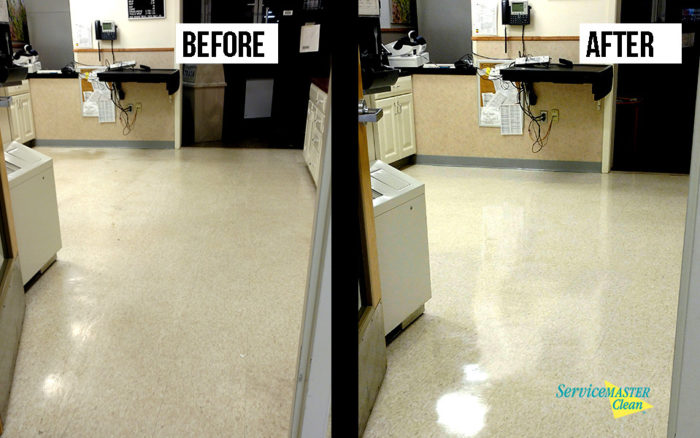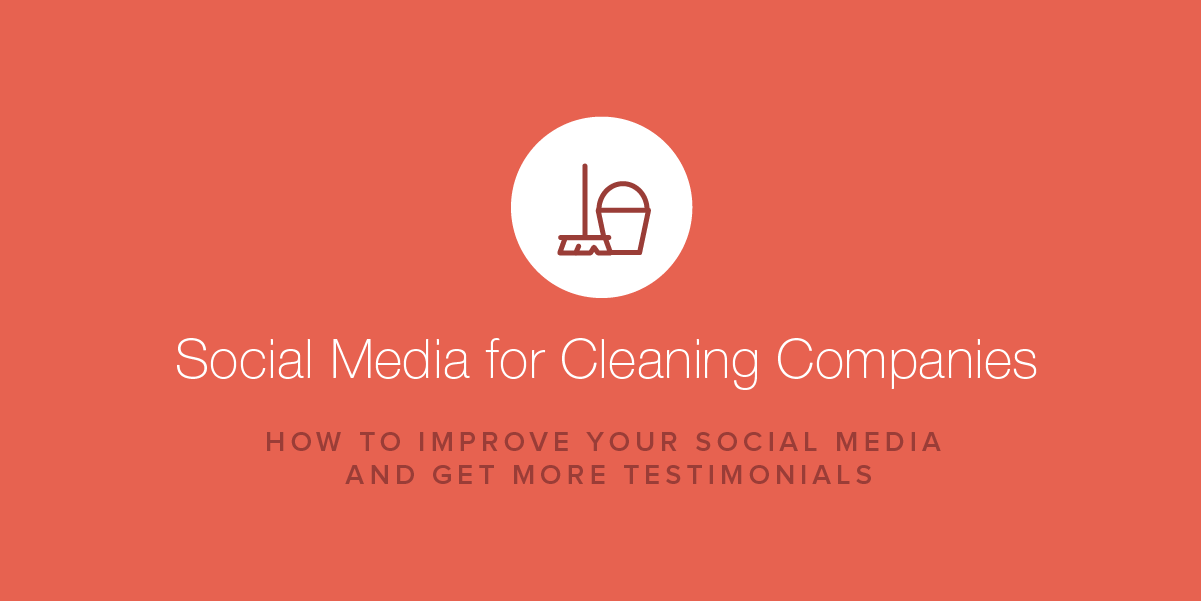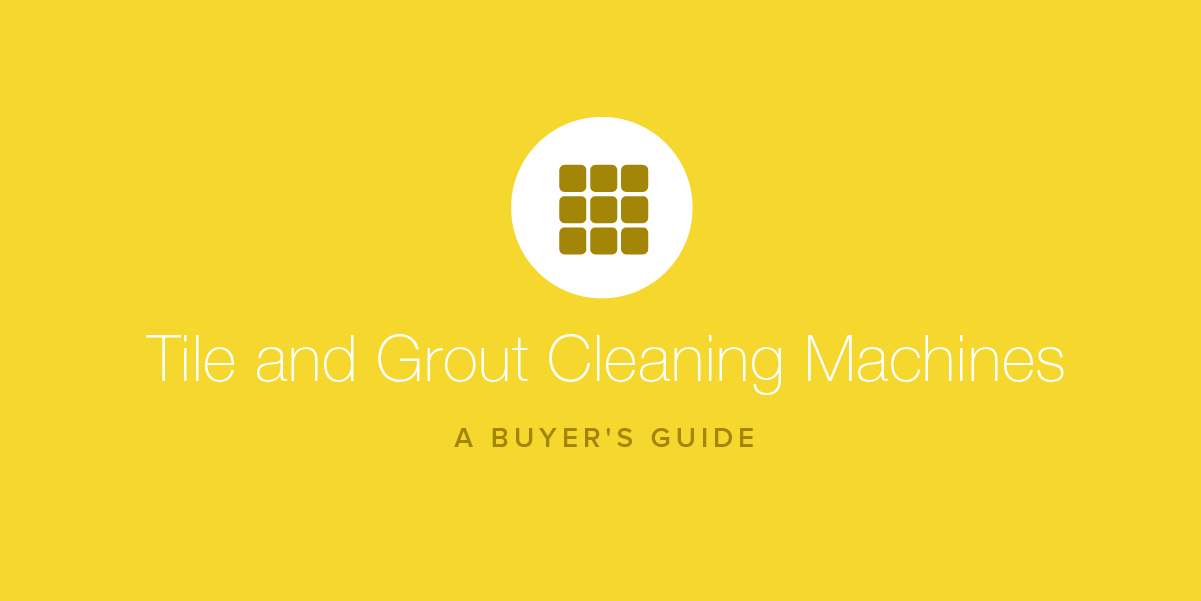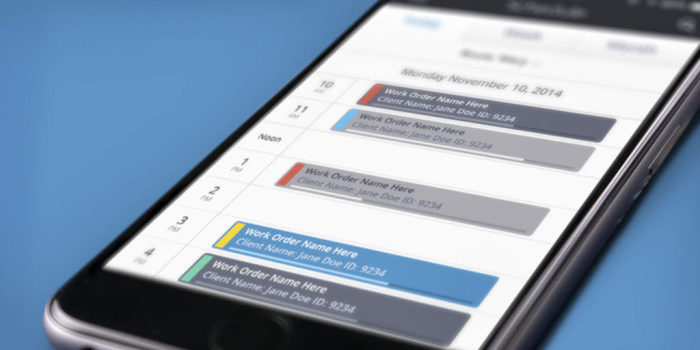How Cleaning Companies Can Improve Their Social Media and Get More Testimonials
- October 16, 2018
- By: Vonigo
For cleaning companies, a steady flow of new customers can mean the difference between success or failure. Acquiring new customers, especially with advertising, can get expensive.
Using social media as a means to gain exposure to new customers can be very cost-effective. Testimonials, reviews, and referrals from existing customers can be among the most powerful forms of marketing.
Here’s how cleaning companies can keep their social media channels up to date, and get more testimonials from their existing customers.

Have a Unique Theme
The cleaning business can be very competitive. If you aren’t unique and you plan to compete only on price, you’re in a race to the bottom. Having a unique story that sets your business apart will help you get talked about.
Maybe it’s the fact that you use green cleaning products. Perhaps you employ armed forces veterans. Maybe it’s a special skill or equipment that you have, like steam cleaning, pressure washing or mold remediation.
Setting yourself apart from other cleaning companies with a unique theme will help to increase your business. This may seem counter-intuitive: specializing in something might seem on the surface as though it will limit your potential. In fact, the opposite is true. When you specialize in something, you make it easier for people to keep you top of mind and refer you.
Have a Social Media Plan
You’re in the cleaning business, not marketing. You don’t need an advanced social media strategy and a lot of analysis. Still, it helps to have a plan that you can stick with. Set goals and have a clear mission.
For example, you can aim to publish one before-and-after picture of your work each week. Or regularly feature a client testimonial on your social media channels. Feature your work on a regular basis, like describing your processes for cleaning different items in a home.

Use the Right Channels
You don’t have to be everywhere, so pick your spot and own the message. For cleaning companies, visual channels like Facebook, Instagram, and Youtube are ideal.
Twitter is too fleeting and competitive to achieve any success in, so focus on visual storytelling using visual channels. On Instagram and Facebook, before-and-after pictures will work well.
On Youtube (and on Facebook and Instagram too), customer testimonials, how-to cleaning videos and features about your team or community will perform well.
Keep a Consistent Schedule
Commit to a regular schedule, and build your plan around it. Let’s say you’ve committed to one before-and-after per week. Make sure you are getting the content lined up so you can stick to that schedule.
Schedule the content gathering into your week. If you like to publish Instagram posts on a Thursday, commit to gathering content earlier in the week so there’s always something to share. Keep reading to learn how to get your team involved with this process, so you’ll never be starved for good stories to share.

Source: ServiceMaster New Forest
Have a “Template” for Your Social Media Updates
There’s no need to re-invent the wheel every time you share a post. It’s better to be consistent — to set an expectation about the kind of content you share and keep delivering on that theme.
For example, If you use the before-and-after concept, use an app like Layout to create split screens, or always use a two-image post style, to show the difference between the two. Keeping it consistent will make it easier to produce each time, and will also help to create a brand story for your business.
Review Your Feedback with Your Team
In order to get more testimonials and social media success stories, your service needs to be top-notch. The easiest way to get your team to buy into encouraging more positive reviews is to bring them into the process as much as you can.
Celebrate your positive feedback by sharing it with your team each week. A short weekly meeting or huddle, or even a company-wide email will be enough to let your team know how much their hard work has a positive effect on customer feedback.

Source: ServiceMaster Kalamazoo
Identify Your Best Advocates
Some of your team members might already have social media skills that could be useful. Or, they might have excellent people-skills that can come in handy for getting more testimonials.
If someone shows an aptitude for taking great pics, sharing stories, or talking to customers, take them aside and encourage them to put their skills to good use. With a bit of direction and an understanding of your goals and templates, you can utilize your existing field teams as social media agents.
You won’t need to hire specific marketing staff, and and you can make content gathering and storytelling part of the day-to-day for your team.
Conduct “Media Training” for Team Members
When you’ve identified advocates who can help you gather content in the field, give them a bit of training and empower them to do so. For a successful before-and-after series, you need a well-lit shot of the site when your team arrived, and another of the finished work, that helps to show the contrast between the two.
In the case of collecting testimonials, you might want to equip your field “advocates” with a template and script for how to collect them. For example, having them identify happy customers and asking if they’d agree to answer one question on camera as a testimonial.
An Example Social Media Testimonial Template
Your template can be as simple as this:
Have the customer in a well-lit and reasonably quiet spot, like outside on their patio or in front of their building
Frame a smartphone video of them that shows their head and shoulders and ask them one question: How do you feel about the work we did here today?
Just one simple, open-ended question. This approach will more often than not give you some excellent sound bites. A short video with your customer talking about how pleased they are with your work will be a great addition to your channels.
It Doesn’t Hurt to Ask
If you ask all your customers to participate in this way, some will say no. Some will provide answers that are not worthy of a Facebook or Instagram videos. But if you ask all of them, you’ll also collect a lot of great feedback. It will reflect very well on your company and give you loads of great social media content.
As a bonus, you can edit them all together periodically and make a longer video for your website and Youtube channel as well.
Look for Opportunities and Stories
Some stories are better than others. If your team is responding to a flood, or fire damage, or helping to clean out a church basement, or steam cleaning a carpet covered in soot — you know you’ll have a good story to share.
Whenever a job presents itself as an especially good story, find a way to record it and share it. The bigger the mess, the better the results will look. Identify your best stories and do a good job of recording them. Ask the client in advance if it’s ok that you use pictures or videos on your social media channels and website.
Not all customers will agree to participate, but it never hurts to ask. If you ask often, the ones that agree to let you document your work will number high enough that you will always have a lot of great content to share.
Ask Customers for Testimonials
As mentioned, some customers will be more than happy to share their feedback, either in form of text or on camera. People who leave feedback and testimonials do so with one primary motivation: to help others that come after them.
Always ask your customers for testimonials. You’ll get enough to agree to help that you’ll never be starved for reviews, referrals, and social media content.
Acknowledge Your Team for Their Help
If your team is helping to gather stories for you, celebrate their efforts. Make sure you thank them individually for their efforts, as well as celebrating the results with your team. Seeing their work have a positive effect on the lives of customers will be good for morale. And for your bottom line.
Sharing all of your stories in a company-wide email once or twice a month will help to celebrate your team’s work. It will also encourage more of your team members to collect more great stories for your business.
An Example Social Media Schedule
You don’t have to post to social media every single day. Let’s say for example that you publish two social media updates per week. One is a before-and-after, and one is a short testimonial from a happy client. That’s a regular rhythm of content, that is one theme and great for word-of-mouth.
Two posts per week featuring the quality of your work and the positive feedback of your customers. With that, you’ll be running circles around your competition. If your customers share your content with their networks, that’s the kind of distribution that larger companies would be happy to pay for. But all you need is a bit of planning, not being afraid to ask, and taking some time to collect some great stories.
Software For Cleaning Companies
Want to learn how to grow your cleaning company with more bookings and increase profits with software made for cleaning companies? Book a free, private demo of Vonigo.



